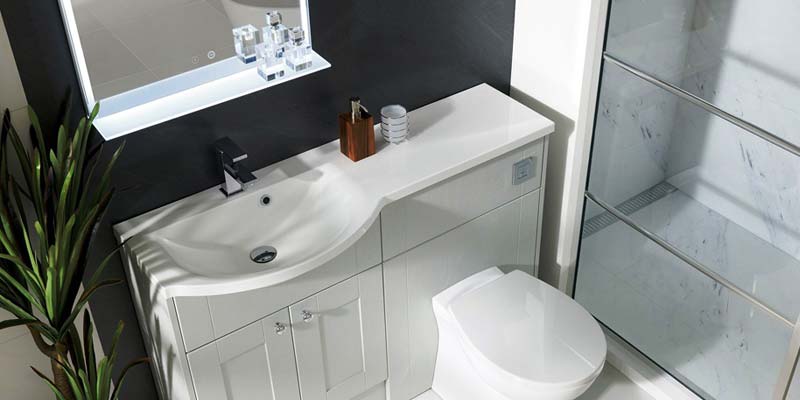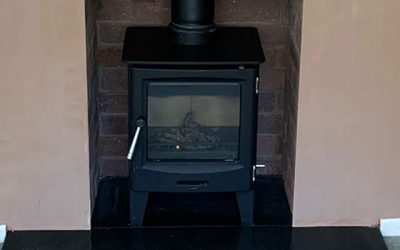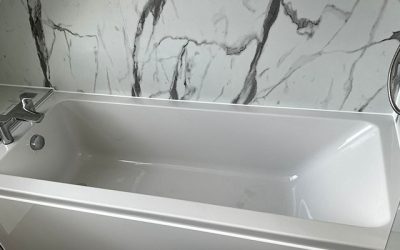Deep Clean Your Bathroom in 5 Simple Steps

Project summary
Over 35 Years Trading
Accredited and Experienced
Happy Customers
Bacteria and viruses are invisible to the naked eye, so even if your bathroom looks sparkling clean, it may not be hygienically clean. Therefore, it is important that you clean your bathroom to remove these as well as visible dirt such as dust and finger marks.
Bleach Kills Viruses
Bleach is chemically known as sodium hypochlorite and it works by oxidising the molecules of cells in viruses and bacteria. Used correctly, as detailed on the bottle, it is safe but remember that splashes of bleach solution will bleach clothing and textiles. Also, wear protective gloves and rinse these well after use.
Useful information on using bleach to clean can be found at www.domestos.com.
Keep the bathroom well ventilated when cleaning with bleach solutions by opening the windows, doors and extractor fan left on for a while if there is no window.
How to clean your bathroom – step by step
1. Wipe down bathroom surfaces and door handles frequently
A daily spray with an antibacterial bathroom cleaner and a wipe with a microfibre cloth will be sufficient to make hard surfaces, such as the window sills, shower screens and floors, look clean and kill bacteria. However, to kill viruses it will be necessary to use a diluted bleach solution. For door handles use 60ml of bleach in a bucket of hot water.
To clean your bathroom floor and other hard surfaces use 120ml of bleach per 5 litres of hot water (do not use a bleach solution on coloured grout and always test on an inconspicuous area of a surface before cleaning.)
2. Thoroughly Clean the Toilet
The toilet should be cleaned daily by using a solution of 120ml bleach in 5 litres of hot water. The toilet bowl can be cleaned by using neat bleach and leaving for 15 minutes or overnight before scrubbing with a toilet brush. Toilet brushes can harbour germs and viruses, so once a week soak the brush in a bowl of hot water to which a cupful of bleach has been added.
3. Cleaning Bathroom Sinks
Your bathroom sink will likely get a lot of use – and so may accumulate a lot of dirt, grime, germs and bacteria. As such it’s really important to keep your sink clean. Start off by giving the sink a wipe down with a wet cloth – try to get as much debris and grime off as you can. Rinse the sink with hot water and then use 120ml bleach to 5 litres of water to clean the sink and give particular attention to the taps, the plug hole and the overflow.
4. Cleaning Shower Curtains
If you have a shower curtain it should be washed at least one a month as it can harbour germs and viruses. Wash in a washing machine with biological powder/liquid on a 60 degrees heat setting. If possible, dry outside in sunlight as this will also help to kill germs. If your shower curtain is not suitable for the washing machine, soak or wash down with a bleach solution.
5. Bathroom Towels and Flannels
It is good hygiene practice to not share bathroom towels and flannels, even a hand towel when someone in the home is ill. These should be changed frequently and washed with a biological powder and at least 60 degrees heat setting.
See more of our projects by Simon Turner
Tips for deep cleaning your bathroom
It’s a chore that few of us enjoy but deep cleaning your bathroom can prevent illnesses and infections as well as making it a more pleasant place to be generally!
Are you considering a wood burning stove? – we answer your questions!
Wood burning stoves are a great choice for your home, both aesthetically and practically. As well as adding character and warmth, stoves are energy efficient and can help you save money on your energy bills.
Installation of the Durlston Balanced flue gas fire
A lovely installation of the Durlston Balanced flue gas fire with the brass and black trim and fret.
The installation of the Capital Fireplaces Woodrow 5kw Stove
The installation of the Capital Fireplaces Woodrow 5kw stove surrounded by the rainbow brick chambers in the aperture creates a beauty of a focal point.
New Bathroom fitting completed to the highest standard
Beautiful, elegant, and completed to the highest standard… There is no question why our customer has been left with nothing but complimentary comments about our company, the workmanship, and their new and improved bathroom.
Cast Tec Horizon 5 multifuel stove installation
The installation of the Cast Tec Horizon 5 multifuel stove completed by our HETAS engineer looks fantastic in the recess with the Capital rustic brick chambers.
Capital Fireplaces Woodrow Burner
The Capital Fireplaces Woodrow burner looks perfectly suited to the space and design of the chimney breast.
New and improved bathroom designed & fitted
There is no question why our customer has been left with nothing but complimentary comments about our company, the workmanship, and their new and improved bathroom.
Installation of the Elgin and Hall Huxton
A lovely installation of the Elgin and Hall Huxton electric suite.













